Live: China's inaugurates first Mars exploration mission Tianwen-1 in southern Hainan Province
https://youtu.be/V9BsqPqqQbgMission marks nation's official start of interplanetary probe era
https://youtu.be/U9OTyGXJMic
China's Long March-5 Y4 carrier rocket, carrying the Mars probe, blasted off at 12:41 p.m., July 23, 2020, from Wenchang Spacecraft Launch Site in south China's Hainan Province.
2020 can be regarded as the year of Mars. Following Sunday's launch of the UAE's Mars probe, China inaugurates its first Mars exploration mission Tianwen-1 in Wenchang Space Launch Center in southern Hainan Province. After the launch via a Long March-5 carrier rocket, the Mars probe will conduct a series of tasks and explorations on the red planet.
Hailed as Earth's sister planet, Mars has become the priority planet in deep space exploration. Can Mars be turned into a second habitat for humans? What will our lives be like if we settle on Mars in the future? Join CGTN to get a closer look at Mars and explore the beauty of the mysterious planet.
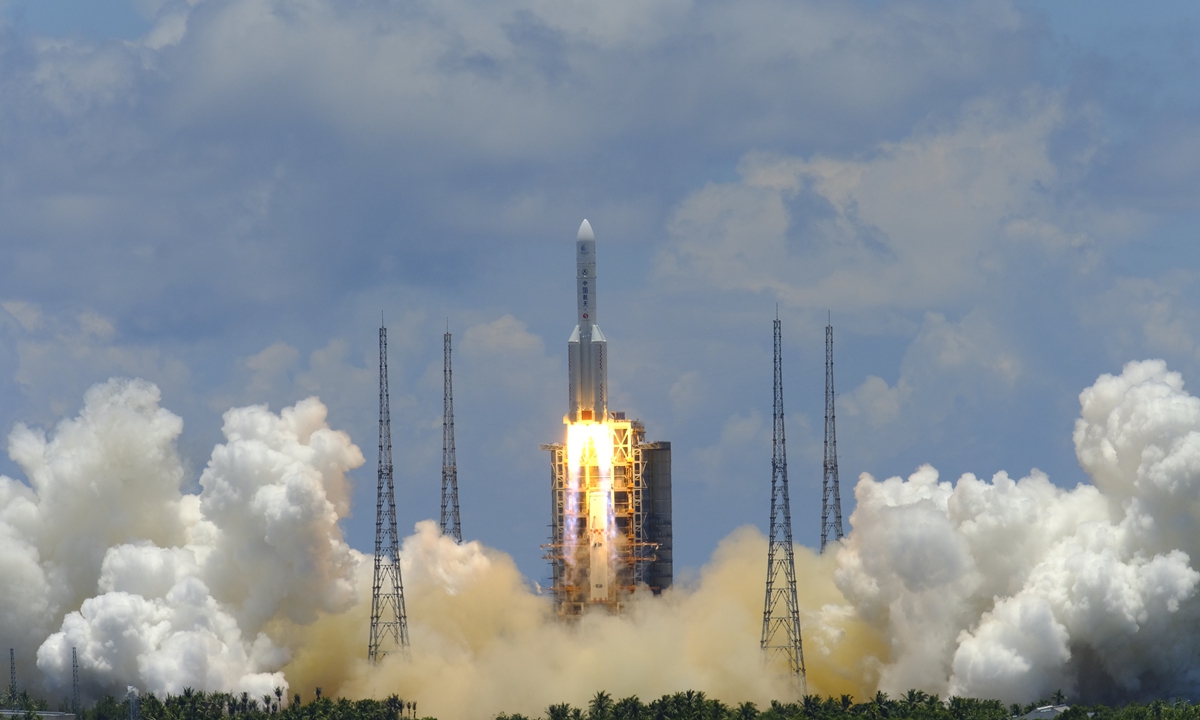
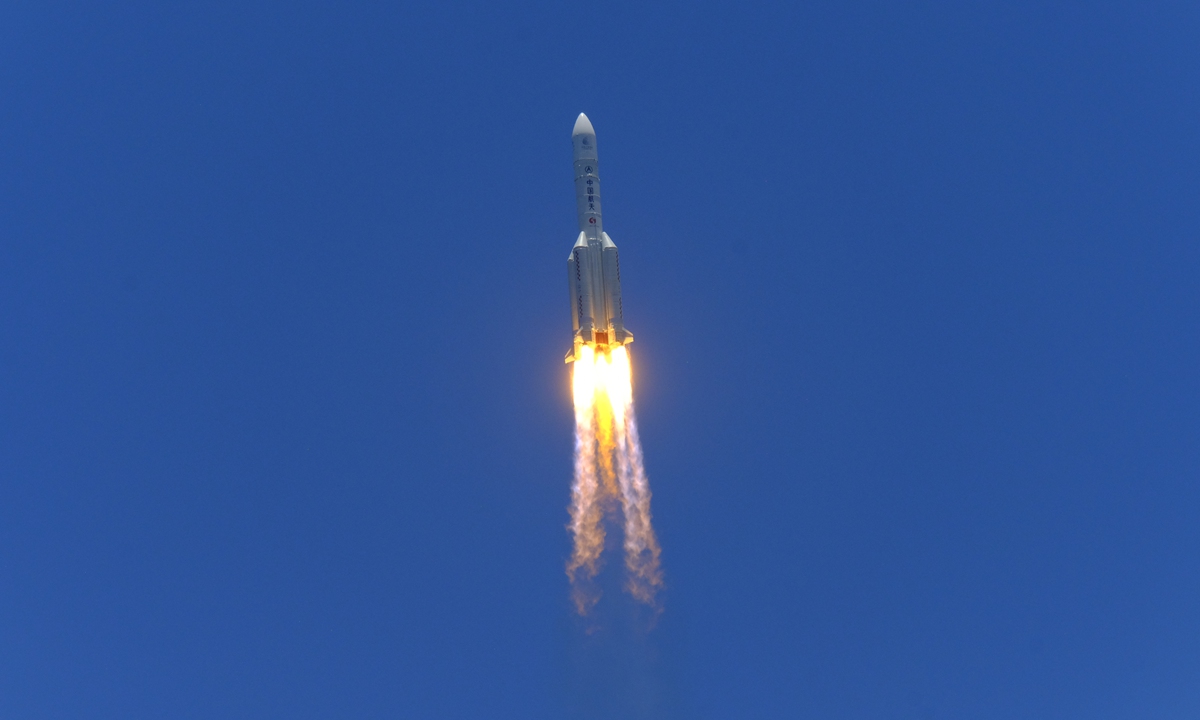
After a flight of around 2,000 seconds, the probe entered the planned Earth-Mars transfer orbit, officially embarking on its journey to the Red Planet, according to the China National Space Administration (CNSA)on Thursday.
China's Tianwen-1 Mars probe is expected to reach Mars' gravity field in February 2021, about seven months after the launch. If it succeeds, Tianwen-1 will be the first Mars expedition to complete orbiting, landing and roving in a single mission in humanity's history.
According to the CNSA, the project is set to achieve a series of technological advances, including Mars orbit insertion, long-term automatic probe management, long distance communication and Mars surface roving capabilities.
The interplanetary mission will also mark China's establishment of a complete deep-space exploration project system, covering design, production, flight mission and scientific research.
The mission also involves international cooperation, as the European Space Agency and Argentina will participate by taking part in spacecraft monitoring and controlling, the Global Times has learned from the CNSA.
Moreover, China is also working with countries including France and Austria on payload scaling and data analysis for the mission.
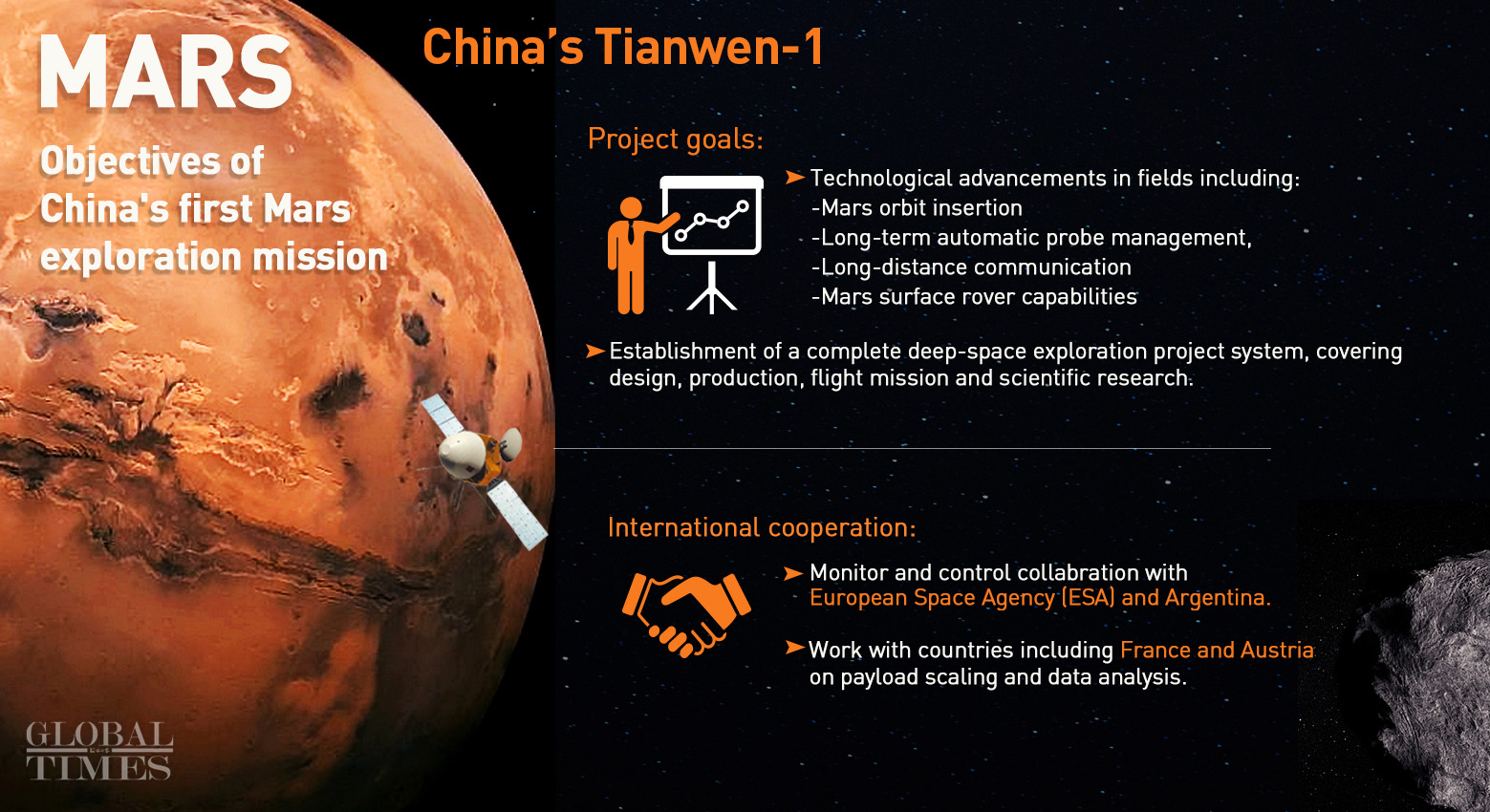
Infographic: Global Times
The Thursday launch mission was the fifth flight of the Long March-5 carrier rocket series, the strongest member of China's launch vehicle family. The last launch mission of the Long March-5B, a smaller variant of the Long March 5, took place on May 5, also from the Wenchang Space Launch Center in Hainan.
The Thursday launch also marked the first time the Long March-5 was put to practical mission use, the rocket developer China Academy of Launch Vehicle Technology (CALT) under the state-owned space giant China Aerospace Science and Technology Corporation (CASC) told the Global Times on Thursday.
"The completion of the first practical mission would indicate that the Long March-5 series has officially joined service," Wang Jue, chief commander of the Long March-5 rocket model, told the Global Times.
Long March-5 has a 5-meter diameter core stage and four 3.35-meter diameter boosters, and is 57 meters long with a take-off weight of around 870 tons and thrust of 1,000 tons. It has raised the country's Geostationary Transfer Orbit (GTO) launch capability from 5 tons to 14 tons.
The Long March-5 Y4 carrier rocket has reached an escape velocity of over 11.2 kilometers per second, managing to send the probe into planned orbit, and according to Li Dong, chief designer of the Long March-5, "this speed set a new fastest flight speed record for China's launch vehicles."
The Tianwen-1 Mars probe, which weighs about five tons, is also the heaviest deep space probe that China has ever sent into space, and is one ton heavier than the Chang'e-4 lunar probe, which China successfully sent to the dark side of the moon in January 2019, the CALT noted.
The powerful launch capability of the Long March-5 rocket has advanced the country's deep-space exploration to a new starting point in interplanetary expeditions, and a new era of planet probes beyond the moon has officially been ushered in as the first Mars probe begins, Li Minghua, CALT's Party chief, announced upon the successful launch on Thursday.
The Long March-5 carrier rocket is expected to launch another Chang'e-5, weighing about eight tons, which aims to undertake the country's first moon sample return mission, set to take place before the end of this year. The Long March-5B will launch the core module of the country's first space station around March 2021, Lou Luliang, the rocket series vice chief designer, revealed to the Global Times.
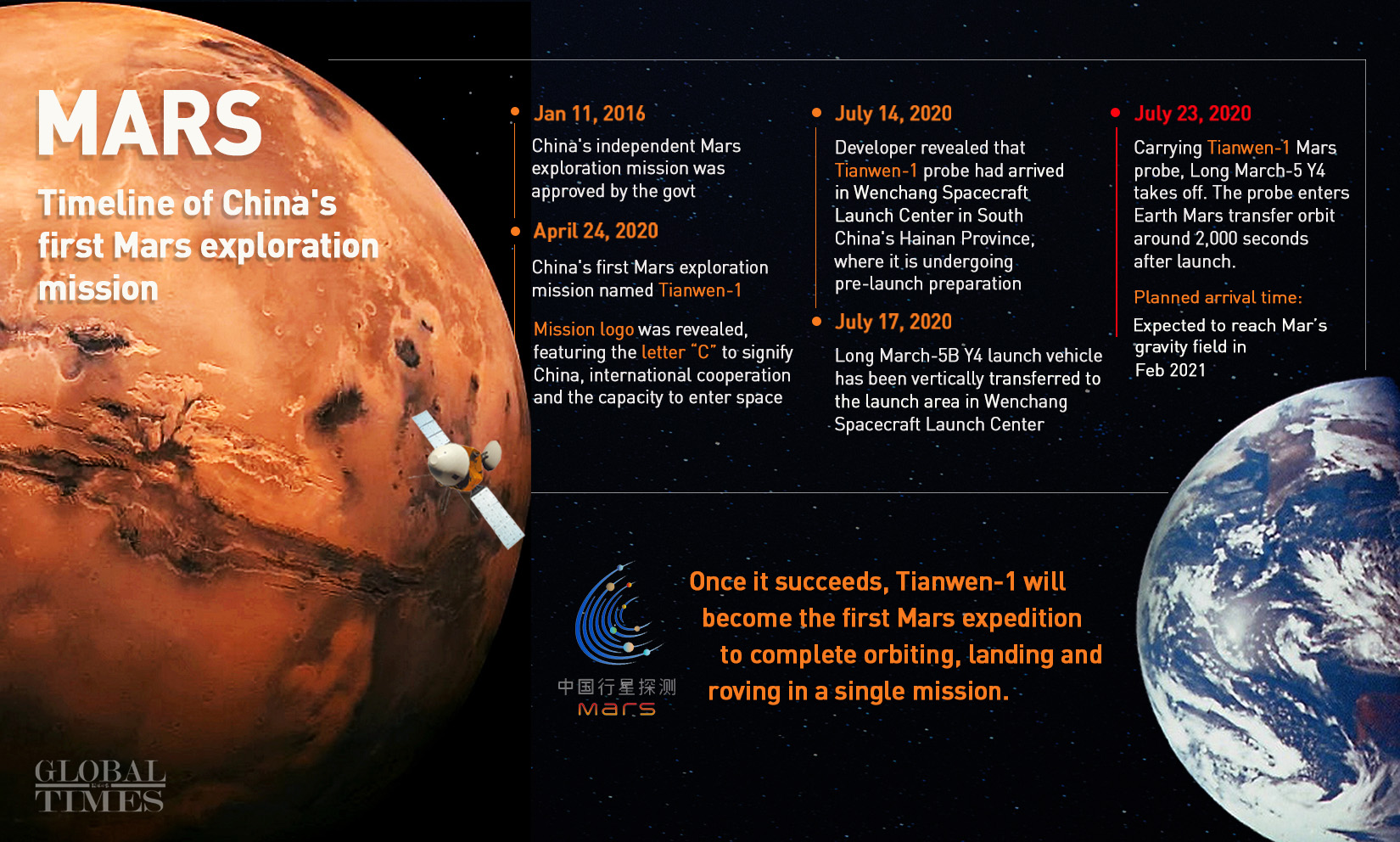
Infographic: Global Times
Challenges ahead
Mars, one of Earth's closest neighbor planets in the solar system, has the most similar environment to Earth's. Human beings have made 44 Mars mission attempts, and only 24 of them succeeded.
The minimum distance between Mars and Earth is about 55 million kilometers, and the two planets only come that close every 26 months. The Mars exploration window is open between July and August.
No country other than China has ever set the goals of orbiting, landing and roving the Red Planet in its first mission attempt, and the successful launch will only mark the beginning of a long expedition full of challenges, and uncertainties also remain, observers noted.
According to the CASC on Tuesday, only a handful of Mars missions have been able to land on the planet and conduct roving explorations.
China's Mars orbiter will carry seven scientific payloads, while the rover will have six, according to the CASC. Safely landing the Mars rover after the probe enters the planet's orbit, which will take around seven minutes, will be one of the most decisive stages of the whole mission. During those seven minutes, the probe needs to slow down from more than 20,000 kilometers per hour to zero, which poses a grave challenge to its surface heat-resistance capability.
To overcome that, CALT has developed a new material structure, which is more advanced than that for the US Apollo flight, to ensure the safety of the probe in the deceleration process.
Besides China, the US and the UAE are also launching their Mars missions this summer.
The first Arab space mission to Mars, an unmanned probe dubbed Hope, blasted off from Japan on Monday, in a bid to reveal more about the atmosphere of the Red Planet.
NASA moved its first launch attempt of its Mars 2020 mission to no earlier than July 30, according to the US space agency's official website.
ExoMars, a cooperation program between Europe and Russia, earlier announced that it will be delayed to 2022.
Source link
RELATED ARTICLES:
First independent Mars mission launched
Related posts:
Infographic: GT Photo: China Aerospace
Science and Technology Corporation China has taken another major
step toward its first Mar..
Related posts:

OTHERS:


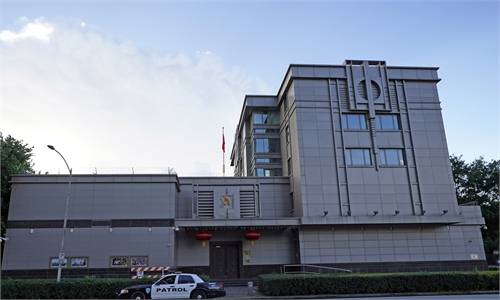
No comments:
Post a Comment